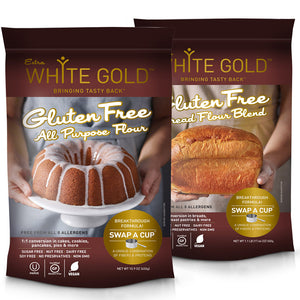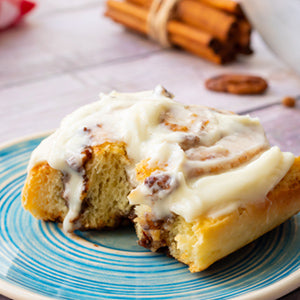There are many good blogs and valuable information about sourdough bread, and gluten free sourdough bread making.
We recommend that you will check them and get familiar with the terms and what to expect before starting.
What is a sourdough starter?
Gluten free sourdough starter is a cultured mixture of friendly yeast and bacteria, water and flour. This fermented mixture of bacteria, flour and water becomes the yeast needed to raise bread and creates wild yeast. Both of them give baked goods their signature sourdough flavor. When using sourdough starter, you don't need to use commercial yeast, it's accurse naturally.
Our recipe generally takes about 5-7 days to complete, but it could take longer. Check to see if bobbles appear and the aroma is sweet.
- Morning day 1: In a medium glass bowl or jar, whisk1/4 cup or 60 gr sorghum or brown rice flour and 1/4 cup or 60 ml filtered water. You’re looking for a thick paste-like consistency. Scrape down the sides of the jar and close lightly, not fully sealed but covered. You can also cover it with a tea towel and a rubber band to hold it in place. Leave in a slightly warm place. Set aside at room temperature 12 hours.
-
Night day 1:
Repeat at night before you go to bed (about 12 hours later), adding 60g more of each flour and water to the jar. Stir, and scrape down. Twice a day feeding is important for the beginning, to strengthen the starter.
Day 2: Repeat this process morning and night for two full days.
-
Day 3 We need to start discarding (do not keep the discards, they are not ready yet!) In the morning, keep only 100g to 120g of the starter.
-
For the next five days, you’ll want to discard everything but 100g of starter every feed. Keep feeding 50g each of flour and water.
Keep feeding twice a day until you start seeing good bubbles.
You will notice a pleasant sweet-sour aroma and bubbles begin to form, your initial starter is ripe and ready..
- Remember, to keep your starter healthy and strong, you’ll need to refresh it, or feed it before using it in a recipe.
- at about day three or four, your starter will begin to smell unpleasant, but it will change.
Regular Feeding Instructions: if your starter is at room temperature, you will want to feed it every day. You will continue with the 100% hydration feedings. This means you will discard down to 100g of starter every day, then feed it with 100g room temperature filtered water and 80-100g gluten-free whole grain flour. Mix well and cover lightly.
Storing your starter in the refrigerator? you will only need to feed once a week, following the same instructions as above.
- If you are feeding for maintenance: you can feed and return straight to the refrigerator.
-
Feeding to prepare for a bake: remove from the refrigerator, feed as normal, and bake at peak rise. Sometimes, two feedings are needed to help the starter to get ripe and ready.

Ingredients:
- Gluten-Free Whole Grain Flour such as brown rice flour, sorghum flour or a mixture of brown rice flour, white rice flour and light Teff flour.
- Room Temperature Filtered Water




Comments
1 comment
Garry M
Thank you for this recipe! This is so helpful